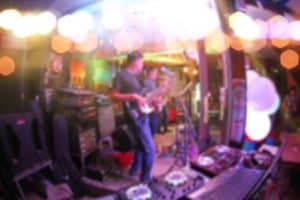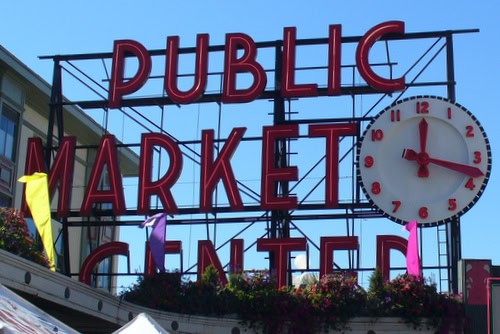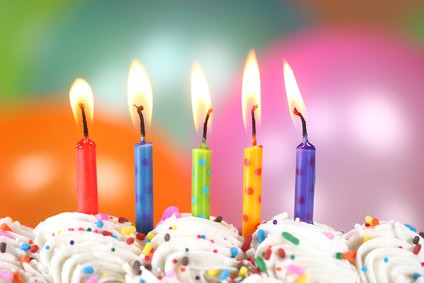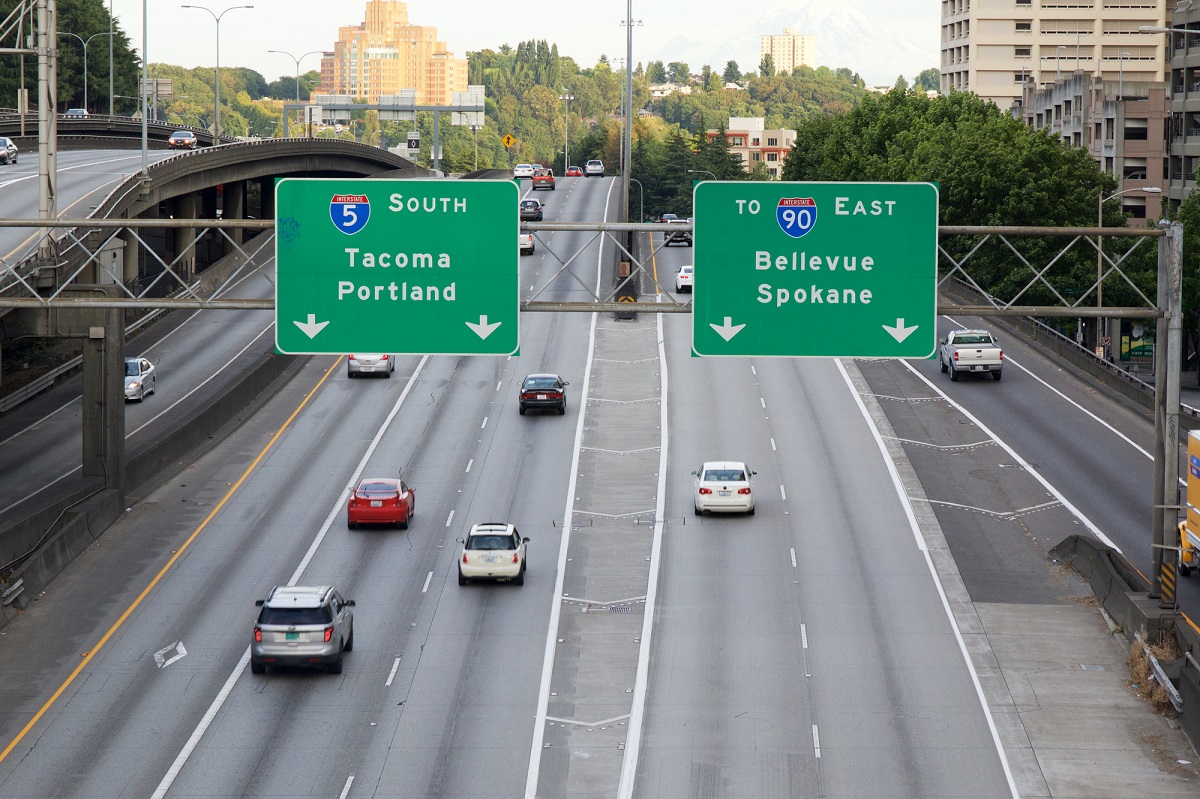In the Puget Sound region, the Great Blue Heron (Ardea herodias) represents the natural heritage, interconnectedness, and ecological richness of the greater Salish Sea (which includes Puget Sound and the Straits of Georgia and Juan de Fuca). Our heron population is part of an intricate ecosystem that includes the marine coastlines and intertidal regions, wetlands, and forests, which they use for food, nesting, and breeding.
The abundance of both saltwater and freshwater, over 4,000 miles of shoreline, and temperate climate creates an ecologically rich system where the large wading bird can flourish. In fact, the Puget Sound region is the area of greatest concentration of Great Blue Herons on the West Coast, attracting some of the largest populations in North America.
About the Great Blue Heron
The Great Blue Heron is the largest heron in North America. The North American heron population consists of five recognized subspecies, including the most common form, A. herodias herodias, which extends into western Washington state.
The large bird has a slate-gray body, chestnut and black accents, and verrry long legs and neck. Young birds are less colorful. Adults sport a shaggy ruff at the base of their necks, young birds have streaked necks. Adult herons stand three to four feet tall. In flight, they look enormous with a wingspan of six feet.
The bird is common near the shores of open water and in wetlands over most of North America from the Atlantic and Gulf coasts to the Pacific, as well as Central America, and the Caribbean and the Galápagos Islands. The Pacific coast heron population ranges from Alaska’s Prince William Sound in the north, to South America and the Galapagos Islands. In the Pacific Northwest, there is a population of a non-migratory subspecies of Great Blue Heron that is described as a separate subspecies, A.h. fannini.
Great Blue Herons are vulnerable to a number of environmental impacts and changes within the Puget Sound Basin, including habitat loss due to urban development, pollution (including noise disturbance), depredation by bald eagles, and other environmental factors, including climate change. The species is under constant threat and at risk of decline. Please exercise caution when birdwatching.
Nesting areas with a group of heron nests are referred to as rookeries, heronries, breeding colonies, or nesting colonies.
Heron breeding habits in the Puget Sound region
Heron nests are typically built high up in trees and are mainly constructed of sticks. Herons may return to the same nest each year, adding new sticks as needed. However, herons bond only for the current nesting season. Adults will find a new partner each year for breeding.
From January to March, there is a large influx of adult herons to heronries or nesting colonies to prepare for breeding season. Colonies in the South Sound breed earlier (January-February) and in smaller concentrations than those of the North Sound and the southern Strait of Georgia (February-March), where there are larger concentrations.
July to September is the conclusion of the breeding period, when fledglings and adults leave the colony and head back to the feeding grounds. October to December is a non-breeding period, when herons are foraging or roosting alone or in small groups throughout the Puget Sound region, typically near sea level and lower elevations.
Best places to see Great Blue Heron in March
Great Blue Herons are protected under state and federal law, and by the City of Seattle. When observing the rookery, please keep in mind the 1000-foot disturbance buffer zone.
March is one of the best months to visit breeding heron colonies in Seattle and surrounding areas. Keep in mind that while birds typically return to the same nesting area each year, colonies can also move from locations for various reasons, such as predation from eagles.
Seattle is home to many heron colonies, including the North Beach neighborhood (between Carkeek Park and Golden Gardens), Matthews Beach, the University of Washington campus, Commodore Park on north Magnolia Hill, and the West Marginal Way Greenbelt. Seattle’s largest colony is located in Commodore Park on the north side of Magnolia Hill along Salmon Bay. More info: The Herons of Commodore Park – Green Seattle Partnership
Lake Sammamish State Park boasts one of the largest heron rookeries in the region. More info: Great Blue Herons — Lake Sammamish State Park (lakesammamishfriends.org)
Renton’s Black River Riparian Forest and Wetland is home to more than 50 species of birds, including one of the largest great blue heron colonies in the region. More info: Best hikes and trails in Black River Riparian Forest | AllTrails
Skagit County hosts one of the largest Great Blue Heron colonies in Western North America in the island of forest between Padilla and Fidalgo Bays. More info: March Point Heronry Property – Skagit Land Trust
You can visit the area virtually via The Heron Camera, available daily during nesting season (March – August) from approximately 9am – 5pm PST. More info: March Point Heron Camera – Skagit Land Trust
https://www.youtube.com/live/dFE5Ocp0qGM?si=R3RKjKNX6Bdme32T
Other Puget Sound heron colony locations
In Kenmore at Saint Edward State Park | Washington State Parks and Wallace Swamp Creek Park | City of Kenmore.
In Federal Way, heron colonies are found at the Dumas Bay Sanctuary. More info: Community Parks | City of Federal Way
In Snohomish County, located just off Interstate 5 near Everett, is a little known area called the Snohomish River Estuary. This is a unique place where the nutrient rich waters of the Snohomish River come in contact with the saltwater of Possession Sound. The overlapping of fresh and salt waters creates an area more productive in plant and animal species than a tropical rain forest. Public access to the Snohomish River Estuary can be gained at multiple locations: in Everett at Langus Park, Spencer Island, and Union Slough and in Marysville at Ebey Waterfront Park. More info: The Snohomish River Estuary.
Outside of the Puget Sound region, there are also heron colonies on Vancouver Lake in Clark County and in Grant County at Potholes Wilderness Recreation Area.
But wait, there’s more!
- Bird Watching in the Puget Sound region
- 10 best free outdoor activities year-round.
- 16 Puget Sound lighthouses you can visit for free.
- 13 free park entrance days in Washington State.
- 7 affordable winter sports on ice and snow.
- Popular King County parks for day hikes.
- 30 great park trails for kids in the Puget Sound region.
- And here’s a list of 101+ always free things to do for fun.
- More free and cheap things to do every day: Greater Seattle on the Cheap event calendar.
- Still more ideas for frugal fun: Greater Seattle on the Cheap home page.
Event calendar of free and affordable things to do
Listed below are all types of free and affordable things to do in the next 30 days.
Featured Events are listed first each day, highlighted by a photo. These are unique, popular, or annual events that we or our advertisers don’t want you to overlook.
Find more events and ideas for affordable living at Greater Seattle on the Cheap – Free things to do, cheap fun, discounts and deals in the Seattle-Tacoma metro area
Multiple locations








